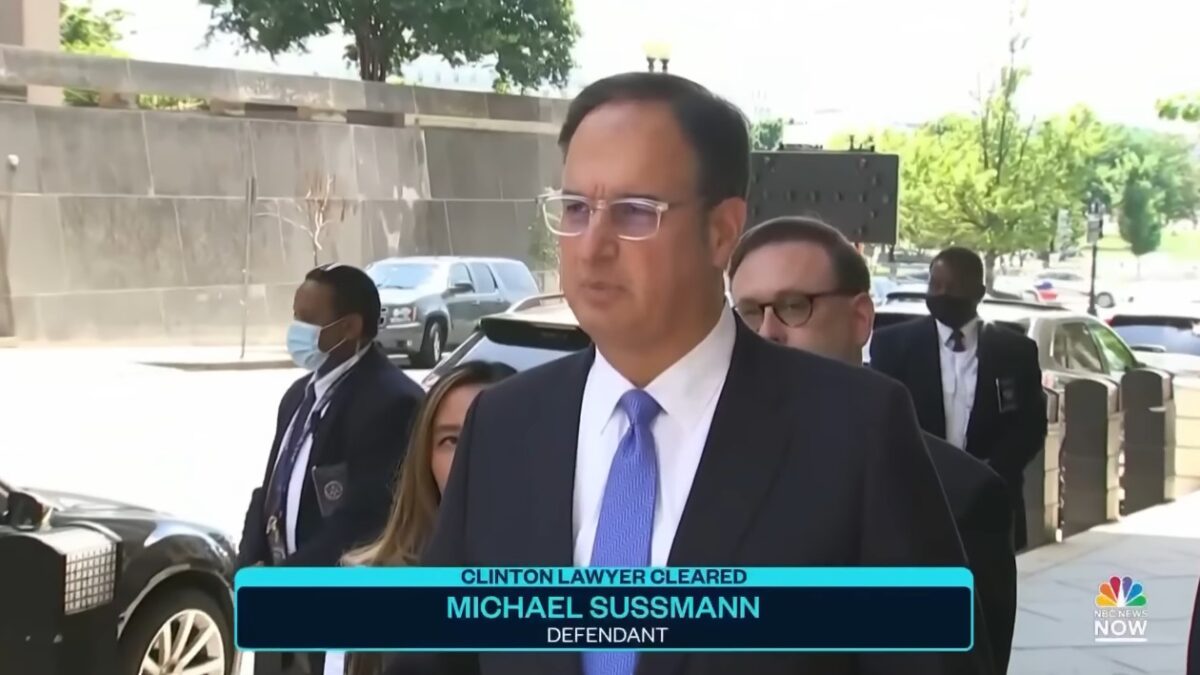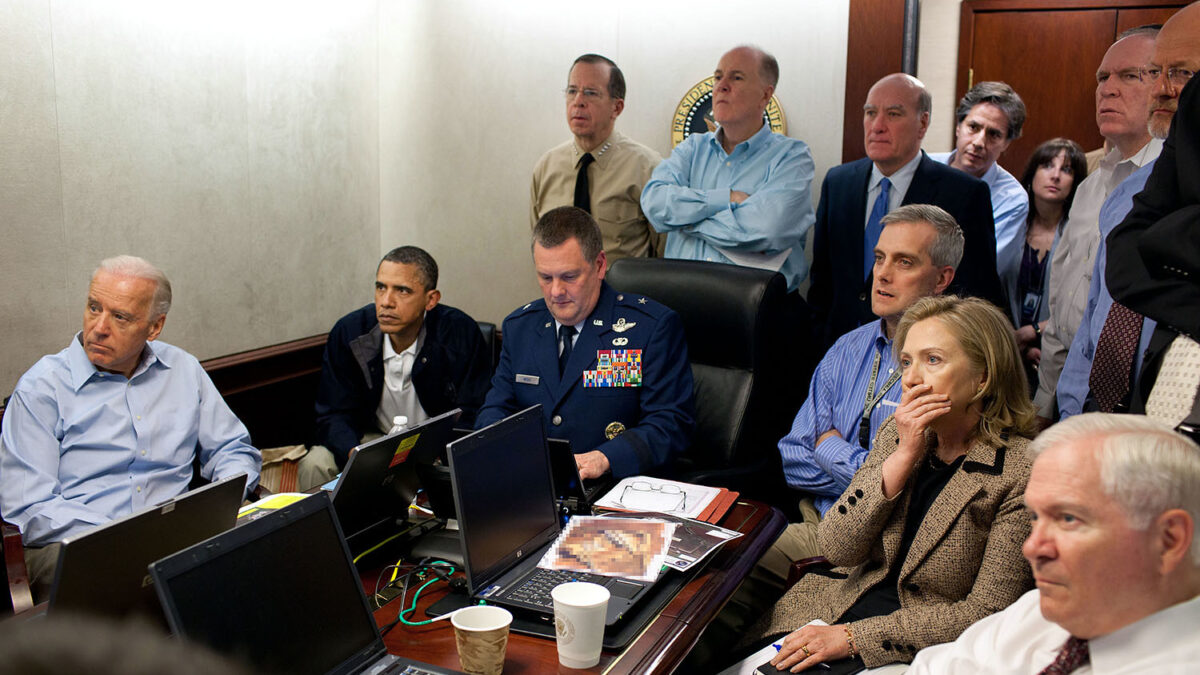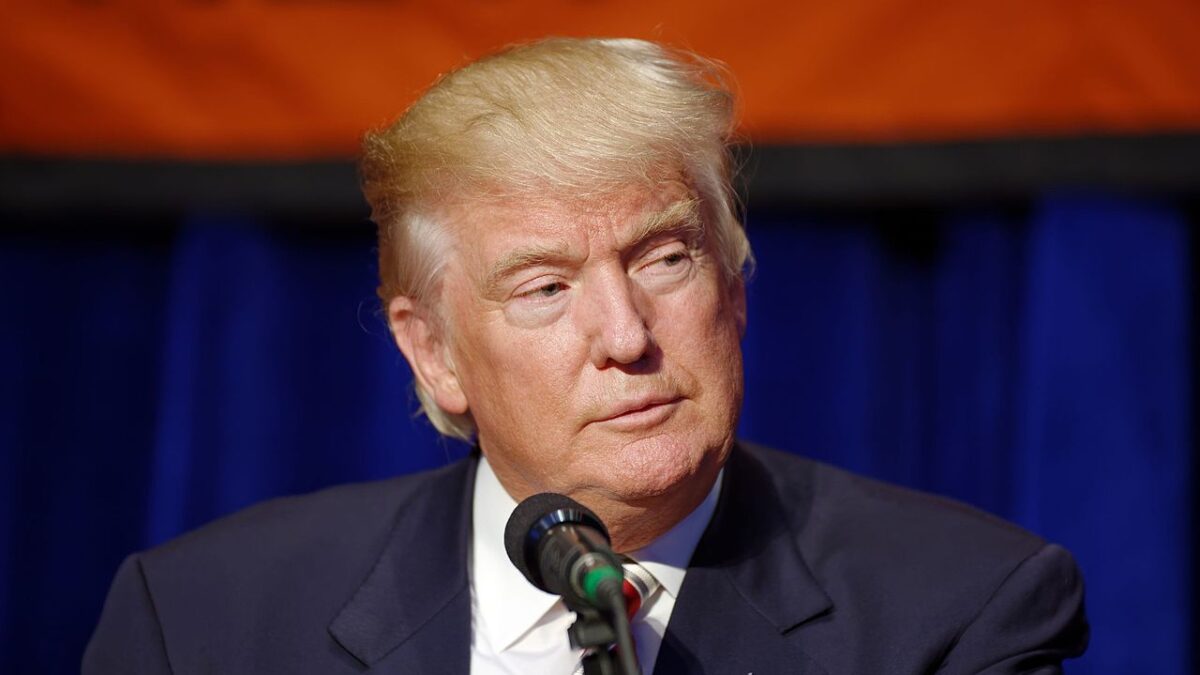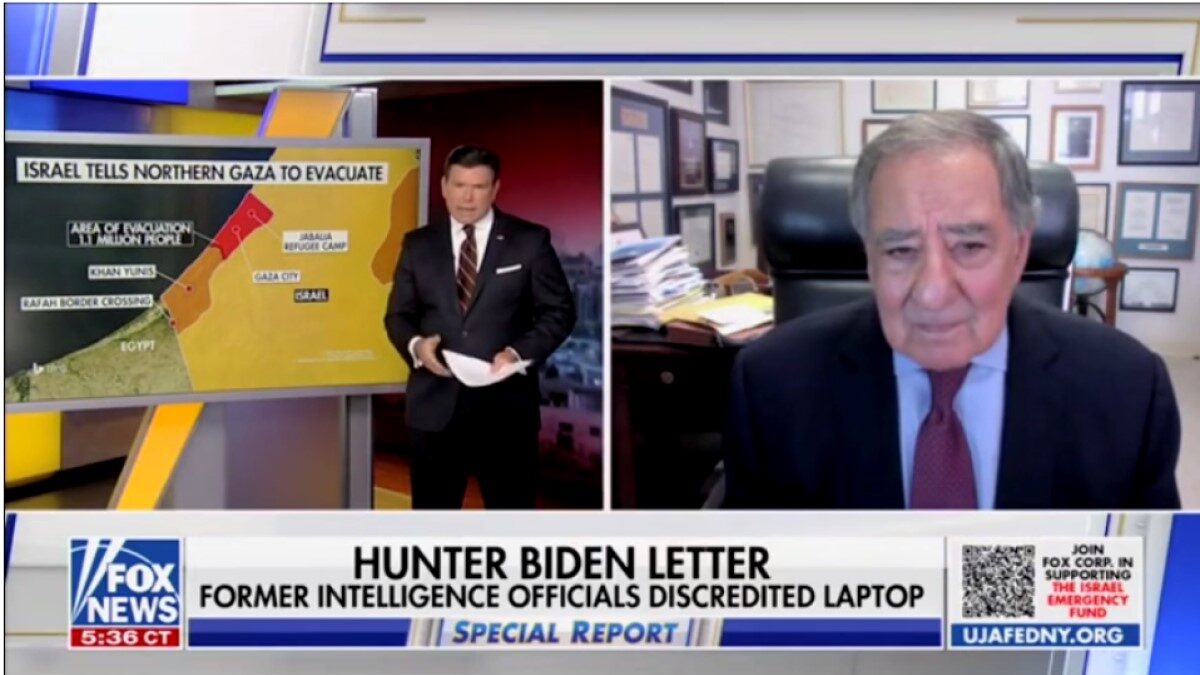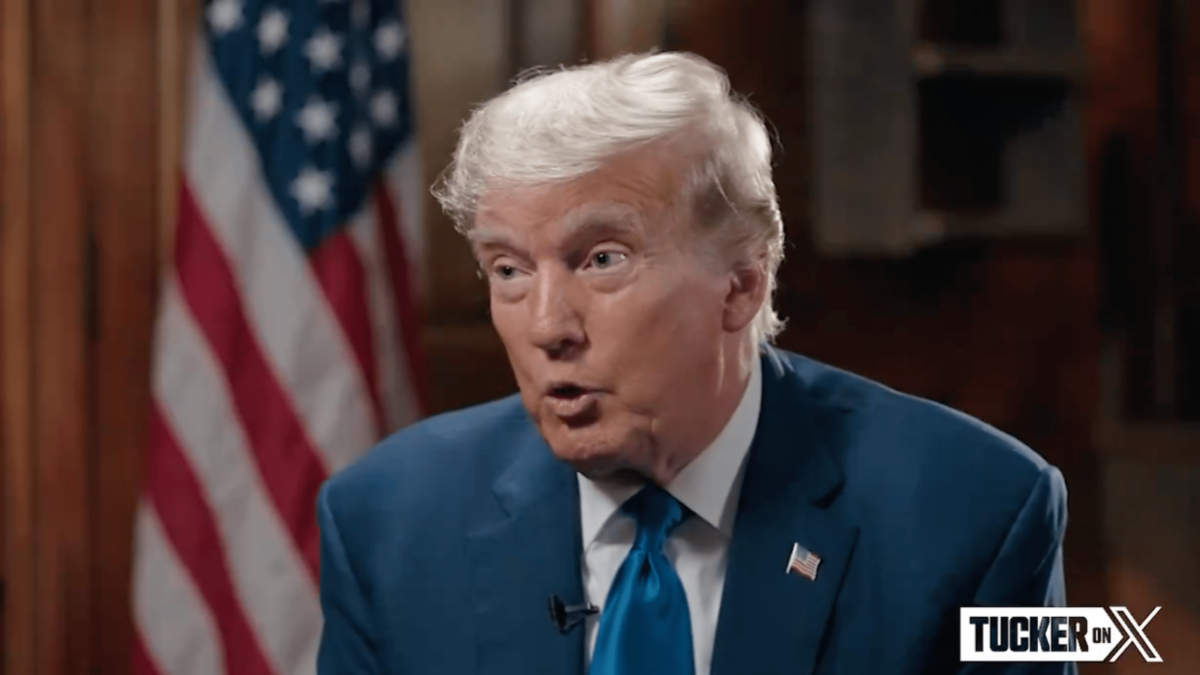Less than one week ago, a Washington D.C. jury acquitted former Hillary Clinton campaign attorney Michael Sussmann of lying to former FBI General Counsel James Baker. Since then, pundits on both the left and the right have painted the verdict as an indictment of Special Counsel John Durham, suggesting his investigation into the perpetrators of Spygate is a bust.
This myopic view of the prosecution, however, ignores the many revelations exposed since the special counsel indicted Sussmann last September. Here are nine significant details learned from the Sussmann prosecution.
1. The Scheming Behind the Crazy Alfa Bank Hoax
The special counsel’s indictment against Sussmann alleged he lied to Baker when presenting Baker data and whitepapers purporting to show a secret communication network between the Russian-based Alfa Bank and the Trump Organization. While the trial focused on whether Sussmann had told Baker he was bringing the FBI that material on his own, when he was really representing the Clinton campaign and tech executive Rodney Joffe, the indictment and various court filings exposed the birth and nature of the Alfa Bank hoax.
The Alfa Bank hoax originated when cybersecurity expert April Lorenzen shared supposedly suspicious data with another tech expert, Joffe. Joffe then told his attorney, Sussmann, about the data, claiming it showed a back-door communications network between Trump and the Russian-based Alfa Bank. Sussmann shared that information with lead Clinton campaign attorney Marc Elias and employees of the investigative firm Fusion GPS.
Joffe then exploited both his relationship with other tech experts and his access to proprietary and sensitive data from the Executive Office of the President. Among other things, Joffe pressured an executive at another tech company and a researcher at Georgia Tech to search broadly for data purporting to connect Trump to Russia. Not only was no connection found, but in emails disclosed in the case, Georgia Tech’s Manos Antonakakis told the others they needed to regroup and rethink their theory, noting hatred of Trump was their motivating factor.
Instead, Joffe forged ahead, drafting a whitepaper that hid the fallacies of the theories. Sussmann then peddled that data and whitepaper, along with two others, to the FBI and later the CIA. Meanwhile, Fusion GPS pushed the Alfa Bank hoax to the media, with the assistance of Georgia Tech’s David Dagon, whom Fusion GPS connected with reporters to supposedly authenticate the research and the conclusion.
While Joffe and his crew thought the whitepaper adequately masked the problems with the Alfa Bank theory, trial testimony revealed that the FBI quickly concluded the data did not support the existence of a secret communications network. In fact, after reviewing one whitepaper an agent noted it sounded “5150ish”—crazy. According to prosecutors, one CIA agent went further, believing that the underlying data had been created.
In total, this evidence revealed not just that the Alfa Bank theory was wrong, but that those pushing it knew or should have known it was a hoax. And many individuals were involved in both the crafting and peddling of the hoax.
2. Hillary Clinton Greenlighted Pushing the Alfa Bank Hoax to the Media
Many players took part in crafting and peddling the Alfa Bank hoax, but the bottom line proven during the Sussmann trial was that Hillary Clinton both paid for and personally okayed her campaign minions giving the press the fake story about a Trump-Russia secret communication network. Former Clinton campaign manager Robby Mook testified that Clinton personally greenlighted the pushing of that Alfa-Bank hoax, and Sussmann’s acquittal cannot erase that fact.
Further, given that her campaign team sought Clinton’s personal approval to peddle the Alfa-Bank hoax to the media, logically one would expect that Mook or others close to Hillary likewise sought her permission to push other angles of the Russia collusion conspiracy, such as those emanating from the Christopher Steele dossier.
3. The Clinton Campaign Abused Attorney-Client Privilege
Clinton’s full involvement in the Russia collusion hoax, either directly or through her various Perkins Coie and Fusion GPS agents, remains shrouded from view, in part, because of the former presidential candidate’s abuse of the attorney-client privilege. The Sussmann trial exposed this reality when prosecutors moved for access to 38 documents of some 1,500 withheld from the grand jury based on claims of attorney-client privilege.
The court in the Sussmann case ruled that the Clinton campaign had improperly secreted numerous documents from prosecutors, and ordered Fusion GPS to turn the unprotected material over to the special counsel. But the court’s order only addressed the wrongly withheld documents from the batch of 38 at issue. The court did not rule on how many of the approximately 1,500 remaining documents had likewise been withheld based on a misplaced reliance on attorney-client privilege. Hopefully, the special counsel will force production of those documents soon.
4. The Russian Yota Phone Hoax Was Even Worse
While the Sussmann prosecution focused on the Alfa Bank hoax, the prosecution also revealed a second crazy conspiracy theory pushed by Sussmann and Joffe—this one to the CIA. In court filings, the special counsel detailed how, in February 2017, Sussmann used his connections to obtain a meeting with CIA agents.
During that meeting, in addition to providing the CIA with updated Alfa Bank allegations, the special counsel said “Sussmann provided the agency thumb drives with separate data files for the YotaPhone by the location of the ‘domain name system’ or DNS lookups, including one for Trump’s Central Park apartment, one for the EOP, one for Spectrum Health Care, and one for the Trump Tower.”
Sussmann told the CIA that the DNS data “indicat[ed] that a Russian-made Yota-phone had been seen by [Sussmann’s contacts] connecting to the WiFi from the Trump Tower in New York, as well as a from a location in Michigan, at the same time that then-candidate Trump was believed to be at these locations.”
But the special counsel’s investigation revealed that Joffe and his crew had obtained more complete data about the Yota phones and that data showed “the DNS lookups involving the EOP began at least as early as 2014,” meaning before Trump came on the scene. The data provided to the CIA, however, omitted those DNS lookups from the material given to the CIA, misleading the agency.
Other court filings suggest an even more scandalous reality: that Trump’s enemies were tracking his physical movements. This scenario seems likely given a CIA memorandum included in a filing by the special counsel. That stated Sussmann claimed, “the phone was never noticed in two places at once, only around the President’s Movements.”
Sussmann’s acquittal does nothing to lessen the significance of him peddling to the CIA “fraudulent-by-omission data to prompt an investigation into the sitting president of the United States.”
5. Rodney Joffe’s Super Shady Involvement
The special counsel’s prosecution of Sussmann, by necessity, revealed Joffe’s involvement in curating the Alfa Bank data and crafting the hoax. But the many pre-trial filings and subsequent testimony during the two-week Sussmann trial exposed Joffe’s involvement in several additional suspicious schemes.
First, in addition to working on the Alfa Bank hoax, Joffe took a lead role in devising the Yota phone conspiracy theory. Sussmann purportedly went to the CIA on Joffe’s behalf, albeit without naming Joffe as the client behind the “intel.” To cull the Yota phone data, Joffe also exploited his access to the data of the Executive Office of the President and pressured other cyber-experts to mine proprietary information to frame Trump.
A second significant revelation came during trial, when witnesses testified that Joffe had served as a confidential human source (CHS) for the FBI during the relevant time period and until 2021, when he was terminated. Although Joffe was a CHS, instead of presenting his handler the supposedly suspicious Alfa Bank data, he used Sussmann to feed it to the upper echelons of the FBI. Simultaneously, Joffe provided another FBI contact—again, not his handler—a similar warning about the supposed Alfa Bank-Trump connection, resulting in circular reporting of the hoax.
Joffe also bypassed his handler a third time, in March 2017. That’s when he used Sussmann to provide the Department of Justice’s inspector general information that “a specific OIG employee’s computer was ‘seen publicly’ in ‘Internet traffic’ and was connecting to a Virtual Private Network in a foreign country.”
Given that Joffe used Sussmann on two prior occasions to directly feed the government misinformation about Trump and those connected to Trump, it would not be shocking to find that Joffe repeated the process when he had Sussmann approach the OIG on his behalf. For now, however, the public knows little more than those basics, although the special counsel also knows that Joffe remains a subject of investigation and there are still crimes for which the statute of limitations has yet to expire.
6. DOJ’s OIG Is Not a Team Player
As noted, little is known about the details of the tip Sussmann conveyed to the DOJ’s OIG in March of 2017 on behalf of Joffe. What is known, however, is that the OIG’s office withheld information from the special counsel about that meeting.
From various filings in the Sussmann case, Durham’s team revealed that the DOJ’s OIG did not inform prosecutors that Sussmann had actually met with the inspector general about Joffe’s tip. The OIG also originally withheld some documents related to Sussmann’s meeting with the IG about Joffe’s tip, only providing the material to the special counsel after Sussmann had told prosecutors of his meeting with the IG.
In addition to withholding information about Sussmann’s meeting with the IG, during the proceedings in the Sussmann case, the special counsel discovered the DOJ’s OIG had two of Baker’s cell phones, as well as other cell phones of individuals connected to the Russia collusion probe, but had not provided those to Durham’s team. From this, the public learned that the DOJ’s OIG is not a team player.
7. The FBI’s Team Is So Swampy
The prosecution of Sussmann also exposed that the FBI is not “our” FBI, but the swamp’s. Baker’s trial testimony made that clear when he was pushed by prosecutors on why he had only recently discovered an old email from Sussmann in which Sussmann texted that he wanted to meet on his own behalf. Baker told the special counsel’s team, “I’m not out to get Michael. This is not my investigation. This is your investigation. If you ask me a question, I answer it. You asked me to look for something, I go look for it.”
That’s a shocking attitude for the former general counsel of the FBI to take, given that Baker also testified he was “100 percent confident” Sussmann said during their September 19, 2016 meeting that he was not representing a client. “Baker also told the jury he likely wouldn’t have taken the meeting if he knew Sussmann represented the Clinton campaign.”
Rather than condemn Sussmann, “Baker blamed himself for throwing Sussmann ‘into a maelstrom’ and expressed outrage at how the congressmen investigating the investigation into Trump and his campaign behaved when they questioned Baker about his meeting with Sussmann. Baker displayed not even a sliver of the same distress over his friend lying to him.”
Bill Priestap, another high-level FBI official during the relevant time frame, seemed similarly reticent in assisting the government in its prosecution of Sussmann.
And these are just those who testified at Sussmann’s trial. The Crossfire Hurricane team, up to and including its leaders—then-FBI Director James Comey and Deputy Director Andy McCabe—as well as many of the FBI agents working for former Special Counsel Robert Mueller likewise proved themselves not out to find the truth, but out to get Trump.
The Sussmann trial revealed that Trump may be gone, but the FBI still belongs to the swamp.
8. The Legacy Media Swims in the Swamp
The Sussmann prosecution also proved that the legacy media swims in the swamp. Emails exchanged between Fusion GPS’s co-founders Glenn Simpson and Peter Fritsch exposed the symbiotic relationship between the Clinton campaign and reporters working for the New York Times, the Washington Post, Yahoo! News, ABC News, Reuters, and more.
While anyone paying attention already knew the media was in on the Russia-collusion hoax, seeing the tag-team effort to destroy Trump in the black-and-white of emails provided indisputable proof of the corruption of the supposed standard-bearers of journalism. If those emails weren’t enough, the corrupt media’s failure to cover the Sussmann trial until his acquittal provides a repeat of the lesson, teaching Americans that journalistic integrity no longer exists at major corporate outlets.
9. The FBI Lied to the DOJ
The next revelation discovered as a result of the Sussmann prosecution came unwittingly from the defense team when they disclosed three sets of handwritten notes taken during a March 6, 2017 meeting in which high-ranking FBI officials briefed acting Attorney General Dana Boente. (Boente stood in at the meeting for Attorney General Jeff Sessions, who had recently recused himself from the investigation.)
The FBI’s McCabe, Priestap, and Counterintelligence Deputy Assistant Director Peter Strzok updated Boente and his staff during that meeting. As part of the discovery in the Sussmann case, the special counsel team provided Sussmann with notes taken by DOJ officials Tashina Gauhar, Mary McCord, and Scott Schools.
As Hans Mahncke and Stephen McIntyre previously detailed at The Federalist, those notes indicate that the FBI lied to the DOJ during the March 6, 2017 meeting in numerous ways. For instance, the notes reference “‘CROWN reporting,’ implying that the dossier was an official United States intelligence product when it was actually made-up stories and gossip and paid for by the Clinton campaign—a fact the FBI knew from their [Igor Danchenko] interview.”
Significantly, as Mahncke and McIntyre stress, the FBI had interviewed Danchenko in January 2017 and at that time Danchenko disavowed much of the intelligence Steele attributed to Danchenko in the dossier under the moniker “Primary Sub-Source.” Yet the March 6, 2017 notes omit any mention of Danchenko, suggesting the FBI concealed the crumbling of Steele’s reporting from the DOJ.
The notes from the March 6, 2017 meeting, while discussing the Alfa Bank data, also omitted any reference to the fact that the FBI’s cyber analysts who investigated the data Sussmann provided had concluded soon after receiving the data that it “did not suggest any covert communications between Trump and Russia.” Instead, the FBI’s analyst concluded the whitepaper pushing the theory sounded delusional.
The FBI agents handling the Crossfire Hurricane investigation withheld these details and others from the DOJ during the March 6, 2017 meeting. The notes further indicate Strzok “lied to DOJ officials about the opening of the Crossfire Hurricane investigation,” telling them that Trump’s request for Russia to find Clinton’s missing 30,000 emails prompted “the Australian diplomat to provide his tip about Trump aide George Papadopoulos to the U.S. embassy in London.” But the Australian “diplomat provided his tip before Trump made the joke.”
Not only were these details either omitted or misrepresented during the March 6, 2017 briefing to the DOJ, the fourth and final FISA application to surveil Carter Page, dated June 29, 2017, continued to rely on the disavowed portions of the Steele dossier. And from the notes of the March 6, 2017 meeting, it now appears that the FBI agents in charge hold responsibility for the material omissions, as they either lied to, misrepresented, or withheld key facts from the DOJ.
What remains unclear, however, is what Durham intends to do about it. So, while we have learned much from the Sussmann prosecution, we still don’t know whether Durham intends to hold the Crossfire Hurricane team responsible for their role in the scandal. However, with the five-year statute of limitations set to expire later this month on any lies that made their way into the final FISA application, we should know soon if the special counsel sees crimes in play that prosecutors can prove.
If not, justice may still come, just without jail. The Sussmann prosecution proved that, because even an acquittal cannot erase the historic record of the complicity of those involved in the worst political scandal of our country’s history.
